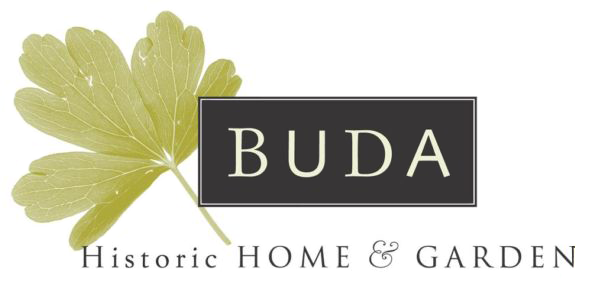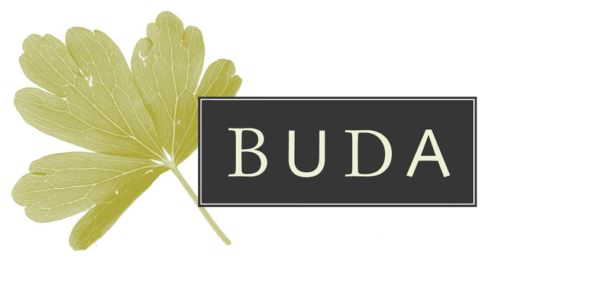Insights into the Levinys of Buda and the Castlemaine Art Museum Connections
Early visions for a strong cultural future in Castlemaine
The Leviny family of Buda, Castlemaine, had a close association with the Castlemaine Art Gallery and Historical Museum (CAGHM) in the first 60 years or so after the institution’s establishment in 1913. Their own assemblage of artworks and decorative arts acquired for their family home grew alongside the Gallery’s collection, with a shared strength in works by Australian artists.
Castlemaine had its fair share of influential people in politics and business during the late nineteenth and well into the twentieth century. Once the dream of the Castlemaine becoming the ‘Great Centre’ (the supposed largest provincial city in Australia) had subsided, with the depletion of the rich gold deposits in the late nineteenth century and a diminishing population, there was still a group of vibrant, culturally aware people in the community who were prepared to use their energy and influence to push boundaries and achieve outcomes for the betterment of the community.
Ernest Leviny, the patriarch of the family, was a Hungarian-born goldsmith and jeweller, and a pioneer on the Castlemaine goldfields. Rather than returning to London after three years as originally intended, Leviny became a naturalised citizen and was eager to participate in the development of the burgeoning community.With a keen interest in science, education and the arts, he was involved with the establishment of the Castlemaine Mechanics Institute in the 1850s with its strong basis in providing access to further education and learning, and again in the 1880s with the development of the School of Design at Castlemaine School of Mines (CSM). The early art masters at CSM included such talents as Thomas F. Levick and Charles W. Steiner, who were to have a lasting impact on their students and the next generation of arts-minded people in the community.
From the early days, Castlemaine citizens were keen to set down roots for future cultural growth and assets with the establishment of the Botanical Gardens, the Philharmonic Society, the Horticultural Society and Liedertafel (German musical and performing society), among others. The Leviny family continued to be involved in community affairs from the pioneering days through to the mid-twentieth century, when the four remaining daughters still resided in the family home. They had many influential friends and acquaintances including artists, politicians and community advocates.
The Leviny daughters were educated at Miss Kentish’s Ladies’ Seminary in Doveton Street Castlemaine, followed by the Castlemaine Grammar School in Hargraves Street—operated during this period by the enlightened McCay family (Sir James Whiteside, his younger brother Adam Cairns and their mother, Esther). Ernest and Bertha encouraged their daughters to follow their ambitions with further education in the arts and medical sciences at a time when these avenues were being increasingly opened up to women, particularly those of privilege. During the late 1800s and early 1900s they attended classes at both the Castlemaine and Bendigo Schools of Mines. Arthur T. Woodward in Bendigo was another highly regarded art educator who was to have a significant influence on his students, encouraging the women to pursue and excel with their artwork. Woodward introduced his students to the philosophy and practices of the British Arts and Crafts movement along with its influential magazine ‘The Studio’, first published in 1893.
The period around the turn of the twentieth century was an exciting era for young women, with offerings of further education, the push for female suffrage, national Federation on the horizon and with it a growing sense of Australian identity, and new freedoms and opportunities leading to greater independence generally for women. They were given a stronger voice and the hope of seeing their dreams and initiatives become a reality in the wider community. A culmination of this new-found confidence and independence was the momentous International Exhibition of Women’s Work held at Melbourne’s Exhibition Building in 1907, where three of the Leviny sisters exhibited works as part of the 16,000 items displayed created entirely by women.
Evidence of women’s proactivity in the community lies visibly in the establishment and early history of the art gallery and historical museum in Castlemaine. Two events led up to discussions around the forming of the CAGHM in 1913: an exhibition in 1910, Castlemaine Past and Present, organised by the Castlemaine Progress Association, with five of its eleven members being local women; followed by a solo exhibition of paintings by Mrs Elsie Barlow in 1912. The contribution of the Levinys to the CAGHM included: Mrs Bertha Leviny’s provision of a small shopfront in Lyttleton Street to display the early collection between 1913–1915; the eldest daughter Mary’s involvement on the establishing committee; sisters Kate, Gertrude, Dorothy and Hilda’s years of service either on the committee or in support roles, along with their brother, Ernest Junior, after his return to Castlemaine during the 1930s. Ilma Leviny also maintained a keen interest, and her husband, Dr James L. Thompson, served as CAGHM President from 1927–1941.
The collection of more than one hundred artworks at Buda (excluding those by family members) has a focus on Australian, particularly women, artists of the early twentieth century. It is clear that as soon as money was freed up to spend after the death of their father in 1905, the Leviny women commenced acquiring contemporary artworks for their home, patronising both male and female, established and emerging artists.
The first documented purchases made by Mary and Dorothy Leviny were two watercolours by William Blamire Young from an exhibition held at the Guild Hall, Melbourne, in 1910. This was followed with acquisitions of oils by Walter Anderson, Bertha Merfield and George Colville along with watercolours by M. J. MacNally and Harold Herbert, most likely purchased from exhibitions at the Athenaeum and Guild Hall galleries in Melbourne.
The most active years of collecting for the Levinys were during the 1920s and 1930s. Many of these purchases were made by Kate, who had a good eye for choosing artworks according to Mrs Beth Sinclair, former Director of CAGHM.
During the First World War a young woman artist from Tasmania, Ursula Ridley Walker, spent some time stationed at the Castlemaine Hospital as a nurse. A friendship was struck up with the Levinys which continued throughout their lives. Ursula invited Kate Leviny to accompany her to Sydney, to live for a few months in a flat attached to the house of her elderly aunt in the suburb of Chatswood. With the vibrant arts milieu in Sydney at the time, Kate’s sensibilities became very tuned and impassioned with visits to local galleries and a growing familiarity with the work of contemporary artists. A keen interest in printmakers, particularly the work of many young women artists involved in this increasingly popular art form, was consolidated. Prints by Margaret Preston, Maude Sherwood and Mildred Lovett were purchased from the Grosvenor and Macquarie Galleries around this time. Buda also has nine highly competent linocuts by Ridley Walker. Kate was involved in organising an exhibition of prints at CAGHM in 1938 and a number of prints were subsequently acquired by the Gallery after this time.
Buda and the Castlemaine Art Museum (CAM) collections both have works produced by local artists who were part of the push to establish the Castlemaine Art Gallery and Historical Museum. These include Elsie Barlow, Alice Newell and Jorgen Frank. Other artists represented in both collections include Jessie Traill, M. J. MacNally, Harold Herbert, Ethel Carrick Fox, Arnold Shore and Margaret Preston.
Connections between the Levinys and others involved with the establishment of CAGHM
Mary Leviny attended painting classes with Heidelberg School artist Jane Sutherland in the early 1890s. Sutherland had a studio at the Grosvenor Chambers in Collins Street Melbourne, along with Tom Roberts. It is likely Mary would have crossed paths with other emerging artists in this circle including the Hake sisters and Jessie Traill. Mary met up with Dora (Meeson) Coates on her travels to Britain and Europe with her brother, Ernest Junior, in 1936.
Elsie Barlow (nee Hake) and her sister, Dora Serle, had also been students of Jane Sutherland and later attended the School of Art at the National Gallery of Victoria. Elsie came to Castlemaine as the wife of the Police Magistrate and was a main driver behind the establishment of the CAGHM. Barlow was a founding member of Twenty Melbourne Painters Society and continued to paint throughout her life.
Winnie Brotherton, another inaugural founder of CAGHM, also had connections in artistic spheres. Her sister, Alice, an amateur artist and poet, was involved with the Bohemian Melbourne group, the Buonarotti Club in the 1880s, and also held links with the famous Heidelberg School artists. Alice married G. Rodney Cherry, an affiliate of this group of artists. She died early, and her daughter, Anice (Nan) Cherry was raised by her aunt, Winnie.
Winnie attended the Castlemaine Grammar School and was a member of the Castlemaine Field Ramblers Club (as was Mary Leviny). She had correspondence with Baron von Mueller regarding the identification of local wildflowers.
Alice Newell (nee Waterhouse) was a friend of the Levinys since their Castlemaine schooldays, attending both the Castlemaine Grammar School and art classes at Bendigo School of Mines in the 1890s. She also attended the South Kensington School of Art in London for a short time 1898–99. In 1903 she married Lieut. Col. F.S. Newell, a Melbourne solicitor, who served as the first President of the CAGHM from 1913-1926. She came into her own as an artist later in life.
Jorgen A. Frank served as the first secretary on the CAGHM committee. A local boy from Vaughan, it is likely he studied art at the Castlemaine School of Mines with the Levinys. Both Buda and CAM collections have etchings and watercolours produced by Frank.










